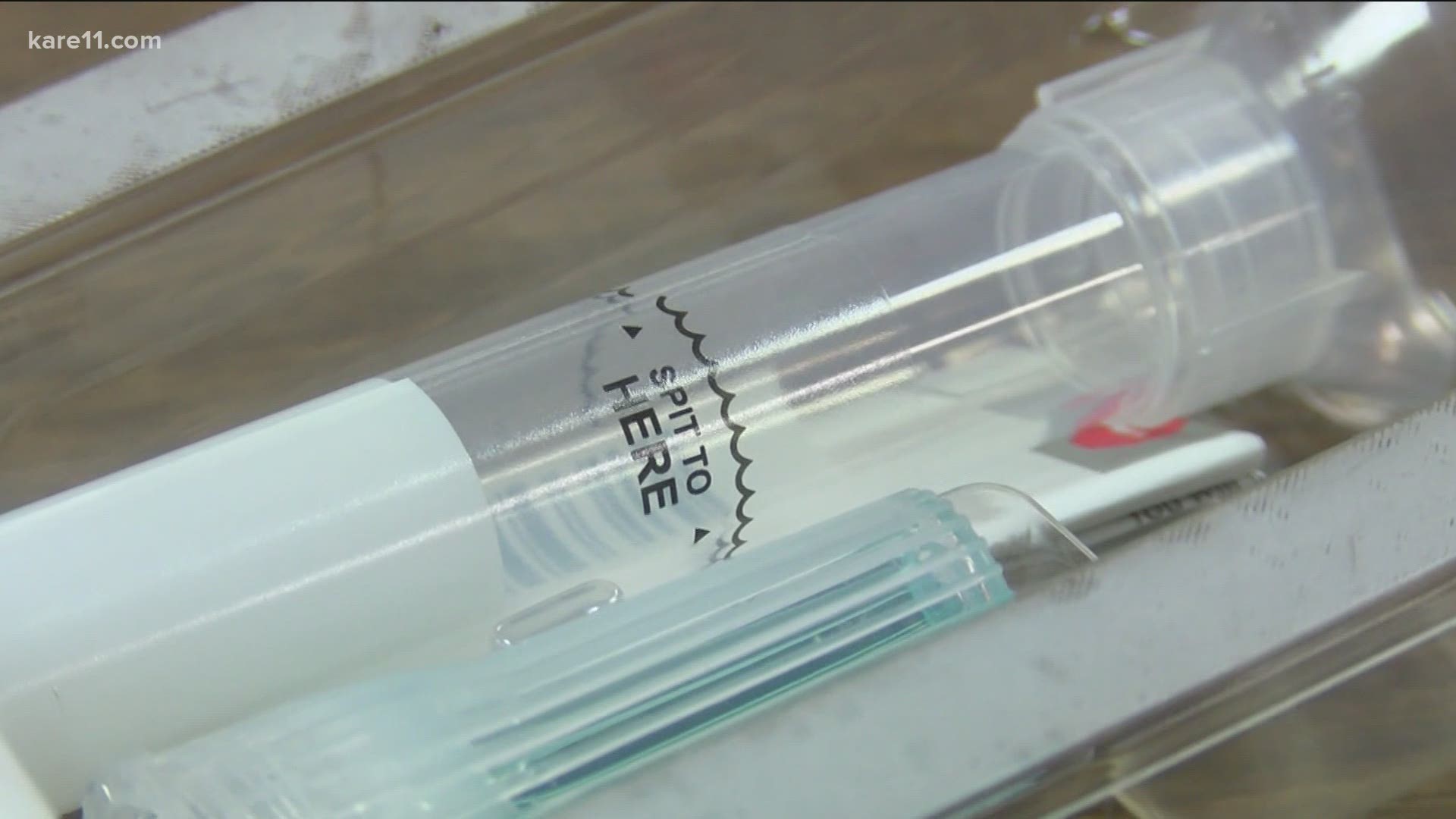MINNEAPOLIS — Minnesota's weekly COVID-19 report doesn't look good for greater Minnesota.
"We're actually seeing higher spread and a higher increase in cases out state, not in the metro," said Dan Huff, Assistant Commissioner for Health Protection. "The central part of the state and the southern part of the state are the areas that are seeing the highest case growth. What I would say is an alarming increase."
The increases in greater Minnesota also illustrate why testing accessibility is now a major focus for the Minnesota Department of Health. Fortunately, there is better news on that front.
After opening the state's first saliva testing site in Duluth two weeks ago, the new collection method has proven popular. It is averaging 500 tests a day and growing.
"Yesterday, we actually did over a thousand (saliva tests)," Huff said. "In the next month we're going to be rolling out nine more sites around the state. About half in the metro. Half will be out state."
According to MDH, the next saliva testing site will open in Winona on Wednesday, followed by a Twin Cities location by the end of next week.
The state has also started a pilot program for at-home saliva testing with faculty and staff at the University of Minnesota and Minnesota State University systems.
"You actually do a Zoom call with a medical provider so that they supervise you over Zoom while you collect your sample," Huff said. "Soon this will be available for all Minnesotans... hopefully in November."
First, MDH is ramping up it's processing capacity. The state is hiring about 70 positions to help staff a lab that will process the saliva samples. They are currently mailed to a New Jersey lab.
The Mayo Clinic is also targeting November for an at-home test of its own.
"I think there's a lot of people that are concerned about the coming holidays," said Dr. Bill Morice, President of Mayo Clinic Labs. "Young adults will be coming back from colleges and universities, and there's concern about spread back into the community because of that."
Dr. Morice says Mayo at-home test is just waiting on FDA approval and will utilize a special swab that they are 3D printing themselves, which is less invasive than the current nasopharyngeal swab, which is the current standard, but pretty uncomfortable.
"It goes back not nearly as far," Dr. Morice said. "We have found that when collected both by healthcare workers, and now we've done some studies with actual individuals doing their own home collections, that it's much better tolerated in terms of comfort and ease of use. The nasopharyngeal swab that goes that far back really would not be safe for people to do on their own, or probably accurate as well."
And that's important because the easier a test is to get the more likely we are to get one.
"Testing is going to be a major component of how we manage the pandemic," Dr. Morice said. "Even when vaccines and treatments come, testing and identifying who has the virus is still the key first step. We really can't have enough testing right now."

